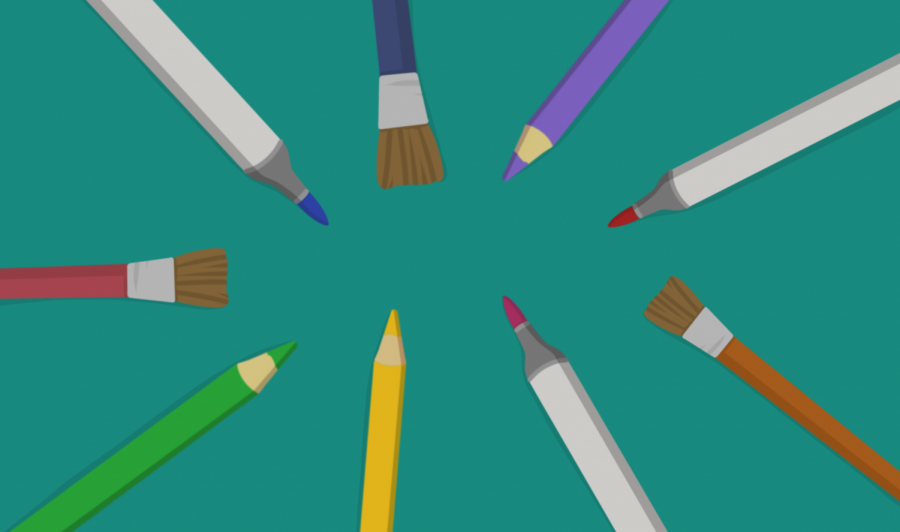Fine arts classes offer valuable skills for non majors
Mar 18, 2021
Last updated on April 5, 2021 at 04:42 p.m.
A student’s burned-out eyes stare at a computer screen, mouse hovering over the Netflix icon. Instead of clicking, she presses the power button and wonder what to do next. The School of Art + Design might have an answer.
The school offers a variety of courses for non-arts majors to take, whether students want to better their artistic technique, develop their critical thinking or just have fun. All skill levels are welcome and photography lecturer Rachel Fein-Smolinski said everyone who comes in has at least some experience.
“However old you are, that’s how much experience you have with the visual arts,” Fein-Smolinski said. “Because you have been working with it since you have had access to it.”
Fein-Smolinski said knowing what an art piece is saying and how to craft such messages in your own work are two skills that are developed through fine arts classes. Being able to contextualize your work and understand how it will be perceived is a benefit in fields outside the artistic realm.
Fein-Smolinski pointed to a study published in a journal of the American Academy of Ophthalmology where students were split into two groups; the first group took six art courses taught by professional art educators and the second group did not.
Upon the first group’s completion of the art courses, both groups were instructed to diagnose eye disorders solely based on eye photographs. The group that had taken art classes did significantly better diagnosing each picture.
In fine arts classes, the skills students learn can already be seen in the job market.
Stacey Robinson, assistant professor in FAA, said visualizing ideas is important and has helped some of his former students start their careers. Images they made, such as designing their own website or creating presentation mind maps, have peeked employers’ interest.
“When you have this new medicine, this new idea that is a great idea, at some point it has to become more than a philosophy and more than a theory,” Robinson said. “You have to test that theory, and you test that theory by visualizing it. You have to make that tangible. It’s the same thing you’re doing in art.”
Art is not just creating new ideas, but also creating new and effective ways to express ideas. Despite art being one of the first activities people learn, the School of Art + Design recognizes that the expression of ideas is not always taught to students.
“It’s a gross misstep in our culture where we don’t celebrate the arts,” Robinson said. “It’s one of the first things that children know how to do, they find something that makes marks and they mark up the walls. They make marks on everything.”
It is this basic instinct motivation to create that is also a source of joy and stress relief for students from all sorts of majors and backgrounds. Laurie Hogin, associate director and professor in FAA, said very fruitful discussions occur in art courses for non-arts majors where students come from diverse backgrounds.
“It gets students to really learn how to look and see,” Hogin said. “It’s a good experience to gain that critical toughness, where your work is being critiqued.”
ART 102: Drawing for Non-Majors, ART 103: Painting for Non-Majors, ART 104: Sculpture for Non-Majors and ART 160: Photography for Non-Majors are some courses that non-arts students can take.
Each professor also stressed the emotional outlet these classes and the arts provide for students, especially during the pandemic.
Fein-Smolinski told a story about a Zoom lecture she gave to a group of medical professionals and the Q&A session that followed.
“Someone unmuted themselves and started asking this question, and at first I thought their audio was cutting out, but it turns out she was sobbing,” Fein-Smolinski said.
The arts can not only develop students’ critical thinking or professional skills, but also their compassion and emotional intelligence. Robinson shared a similar experience with students in a graphic design course he was teaching.
“People are tearing up, because they are learning about someone different than them, but who made such a real experience that they can relate to,” Robinson said. “That’s the power of the arts.”






